
It’s been a long time coming, but the spell-binding Agora Garden Tower, a masterpiece of sustainable design conceived by Belgian architect Vincent Callebaut, is twisting its way to completion.
Construction of this residential tower in Taipei, Taiwan, began back in 2013. Also known as the Tao Zhu Yin Yuan, the structure is rising to 22 storeys, and is expected to be completed, finally, by September 2017.
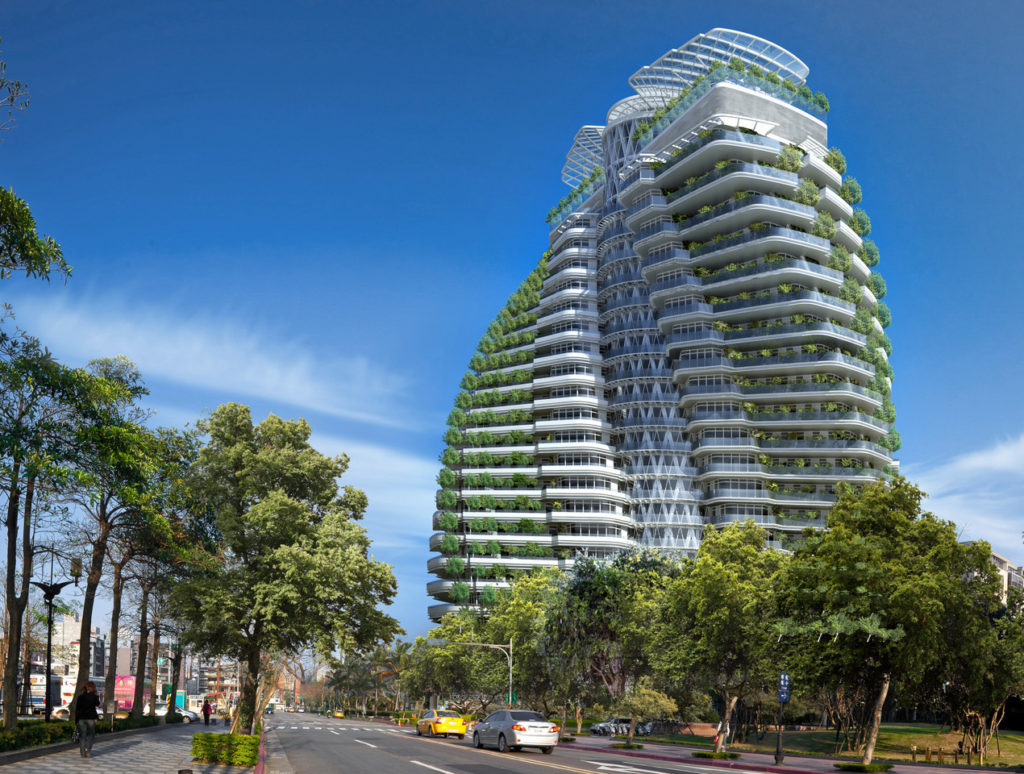
“Taipei is for me the new Asian Silicon Valley,” Callebaut says, in a CNN interview. “I hope that the Tao Zhu Yin Yuan will become, for the city of Taipei, the new ecological symbol of the right symbiosis between humanity and nature.”
That may be saying a lot, but there are many reasons to give Callebaut’s claims credence. Besides the impressive height, the tower twists 4.5 degrees at each floor, for a total of 90 degrees, when all is said and done. And Callebaut is quick to point out that this twisting effect allows residents to enjoy panoramic views.

Arranged throughout the tower will be 23,000 trees, on the ground and on individual balconies of each of the 40 luxury apartments. These are not merely decorative adornments – it is forecast that the trees will absorb 130 tons of CO2 each year.
As a sustainable residential eco-construction development, Agora Garden Tower will also be home to Taipei’s most luxurious rooftop clubhouses, a swimming pool, gym facilities and car parking. Each of the high-end apartments will offer maximum flexibility in terms of interior layout.
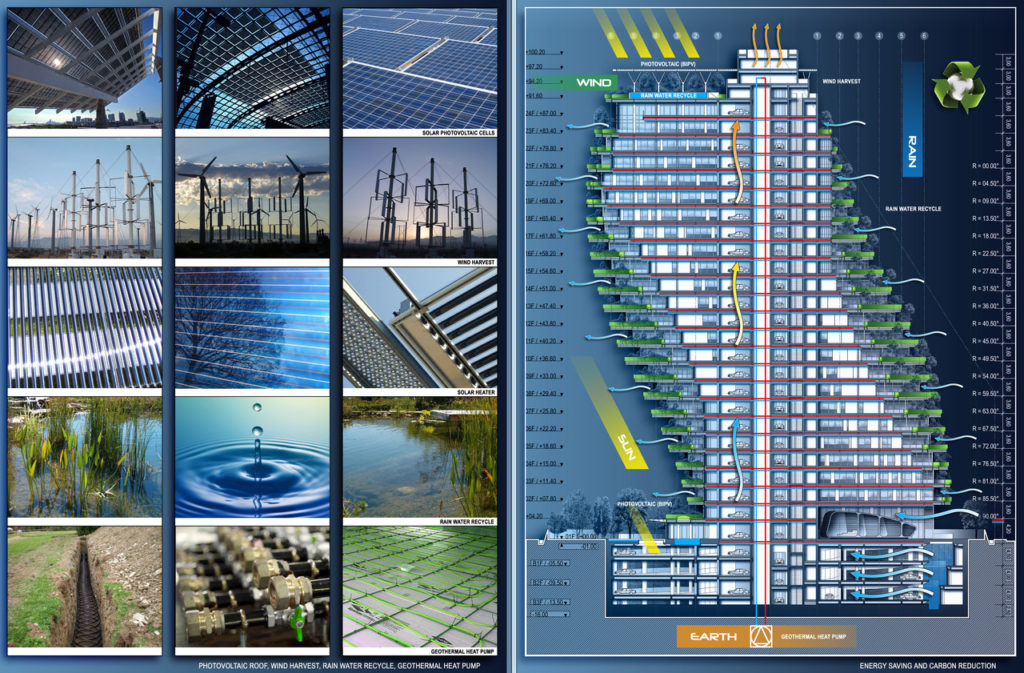
From a green standpoint, the structure will be a fusion of climate, landscape and architecture. The project has an integration of bioclimatic passive systems (natural lighting and ventilation, a rainwater recycle system, low-e glass, double curtain walls) along with an optimum use of renewable energies, including photovoltaic solar roof and canopies.
The energy conservation systems are automated. Along with trees, the tower will also host a vertical twisted garden sitting in the middle along with the aforementioned landscaped balconies, cascades of flowers, fruits, vegetables and aromates. Moreover, the landscaped basement for parking will be naturally lighted and ventilated. All these measures were taken to achieve ecological objectives.
Callebaut is aiming for U.S. Green Building Council, LEED Gold and Low Carbon Building Alliance, Diamond Level certifications. To this end, a rainwater capture and recycling system will be on the roof. In addition, a large 10,763 square-foot roof-based solar panel array will reduce the building’s energy reliance on the grid.
The building is therefore eco-designed. It integrates not only the recycling of organic waste and used water but also all the renewable energies and other new state-of-the-art nanotechnologies (BIPV solar photovoltaic, rain water recycling, compost, for example.)
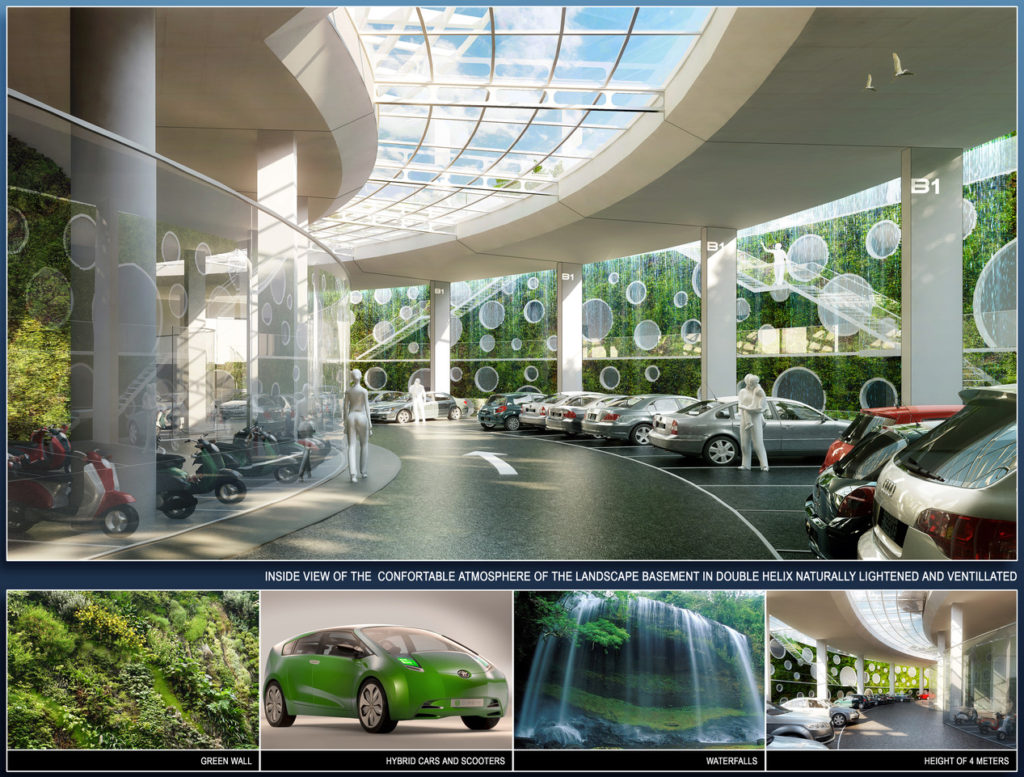
As a living organism, the tower becomes metabolic. It overpasses its energy-consuming passive role (absorbing all the natural resources and rejecting only waste) to produce its own organic food. The architectural concept is thus to eco-design an energy self-sufficient building, whose energy is electric, thermal and also alimentary.
Specifically, the four main ecological objectives attained will be:
At the same time, according to a concept where nothing is lost, everything transforms itself; all the construction and furnishing materials are being selected through recycled and/or recyclable labels. By imitating the processes of natural ecosystems, it deals with reinventing in the industrial and architectural processes in Taipei in order to produce clean solutions and to create an industrial cycle where everything is reused; either by returning to the ground as non-toxic organic nutrients, or back to industry as technical nutrients able to be indefinitely recycled. The project demonstrates the symbiosis of human actions and their positive impact on nature.
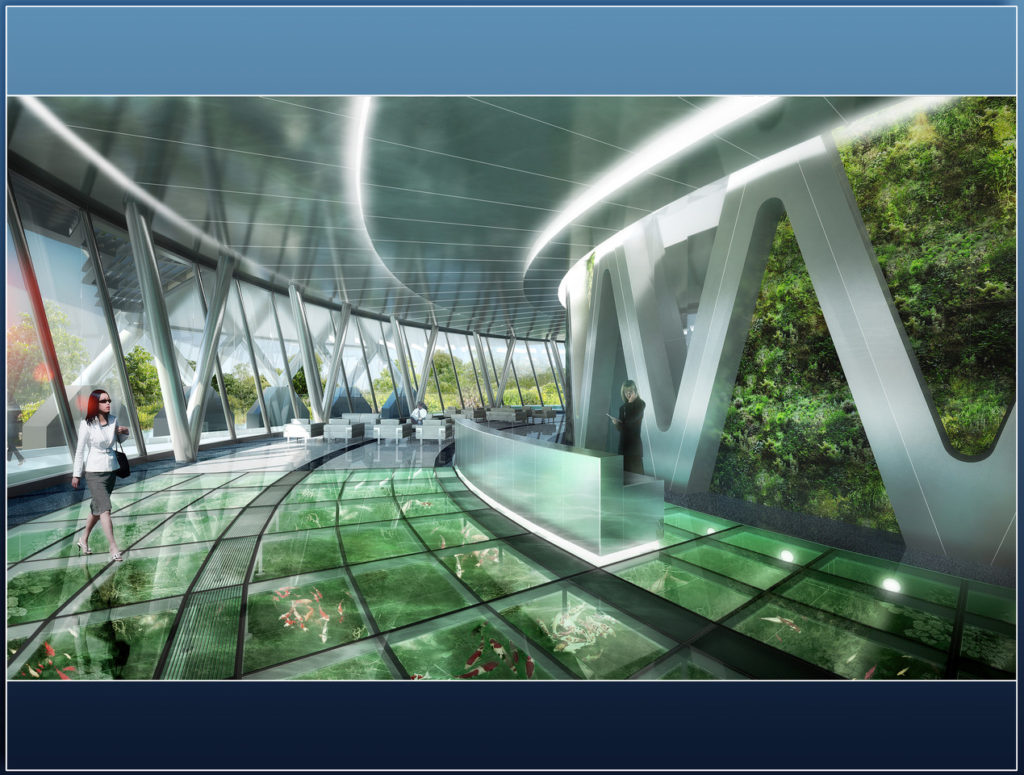
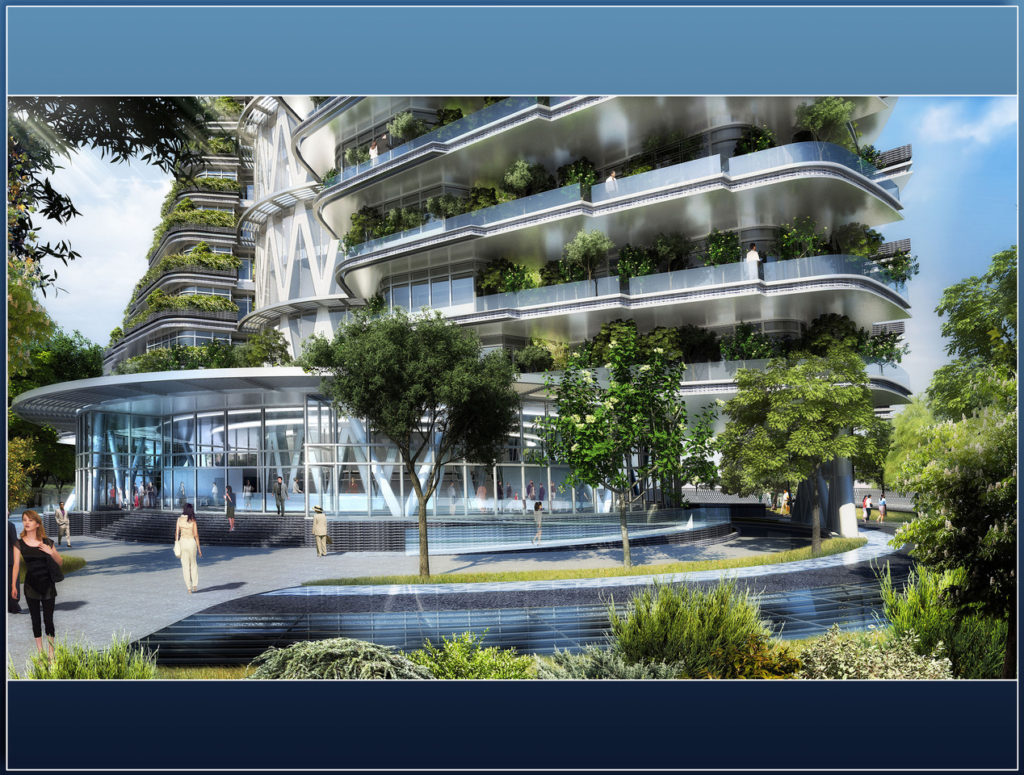
Callebaut takes particular pride in the slogan accompanying this project: A small step for carbon absorbing, a big leap for anti-global warming.
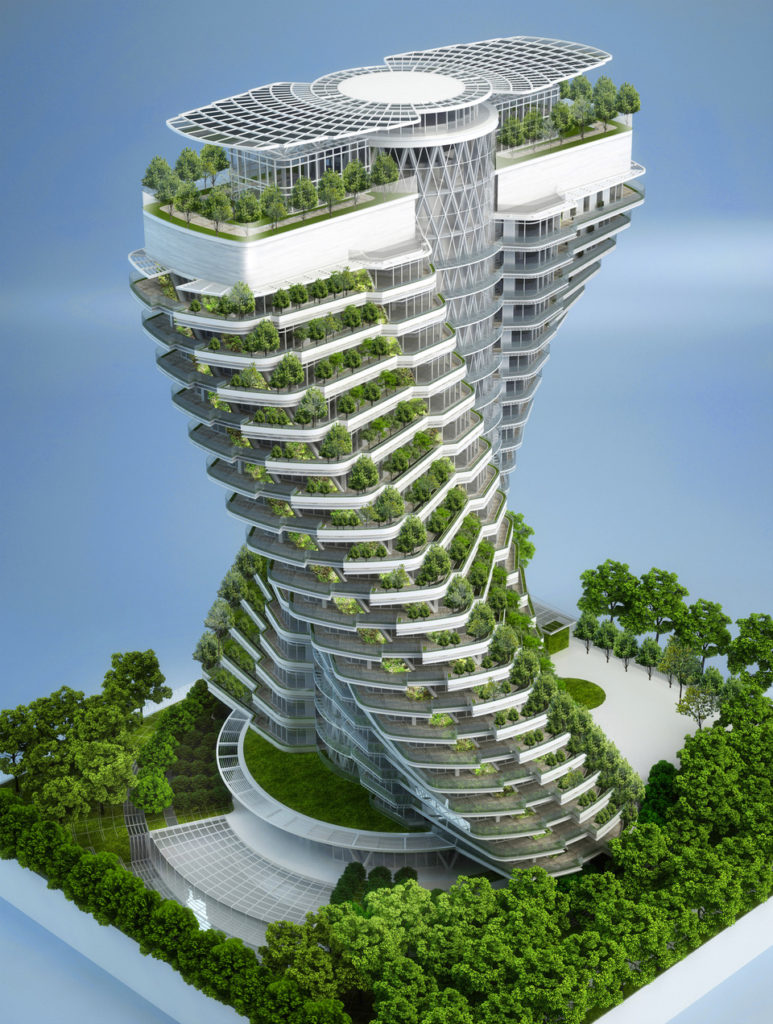
“This type of ecological architecture is not a trend. It’s a necessity,” Callebaut told CNN. “For this project, I realized energy conservation, carbon reduction, and eco-friendly concepts through exceptional and novel green building design concepts with the goal of perpetuating the Confucian spirit of generational succession, continuation of the past and ushering in of the future, and long life and prosperity.”